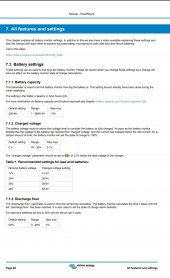tonyg
New Member
- Joined
- Apr 5, 2022
- Messages
- 136
Hi!
This has been frustrating me for a while now ... The 48v system is all Victron, with the exception of battery cells and the BMS.
The BMS SOC is always off compared to the Victron Smart Shunt.
The thing is, that for my settings in Victron Smart Shunt, I have set as fully charged voltage to be 55.2V, for which the JK BMS used to show about 97% SoC. I didn't like it, but I was ready to leave it like that.
Today though, the JK BMS shows 87% SoC for 55.2 V... This was after the batteries' SoC went to about 10%.
For my MPPTs, the following settings are in place:
55.2v absorption
53.6 float
I haven't yet connected the BMS to the Cerbo via the driver kindly developed by Louis, for this particular reason and also since I'm thinking of adding a second battery at some point.
I've tried finding a way to calibrate the SoC of JK BMS, but no success so far...
Any ideas or suggestions for this situation are warmly welcomed.
Thank you!
This has been frustrating me for a while now ... The 48v system is all Victron, with the exception of battery cells and the BMS.
The BMS SOC is always off compared to the Victron Smart Shunt.
The thing is, that for my settings in Victron Smart Shunt, I have set as fully charged voltage to be 55.2V, for which the JK BMS used to show about 97% SoC. I didn't like it, but I was ready to leave it like that.
Today though, the JK BMS shows 87% SoC for 55.2 V... This was after the batteries' SoC went to about 10%.
For my MPPTs, the following settings are in place:
55.2v absorption
53.6 float
I haven't yet connected the BMS to the Cerbo via the driver kindly developed by Louis, for this particular reason and also since I'm thinking of adding a second battery at some point.
I've tried finding a way to calibrate the SoC of JK BMS, but no success so far...
Any ideas or suggestions for this situation are warmly welcomed.
Thank you!




